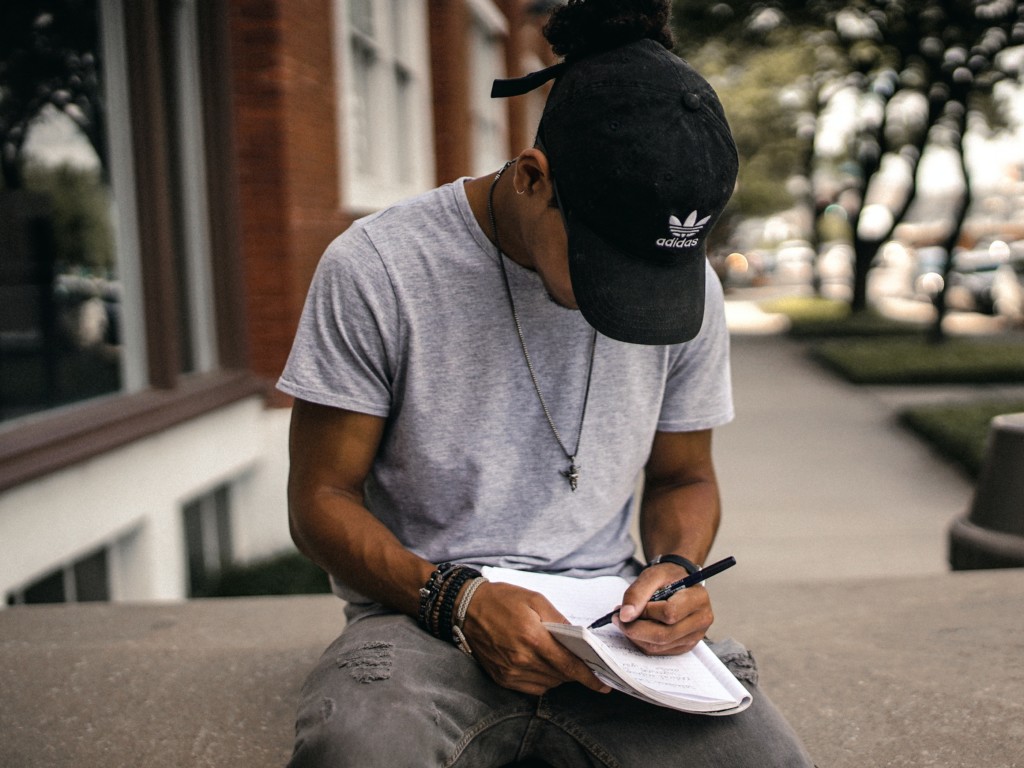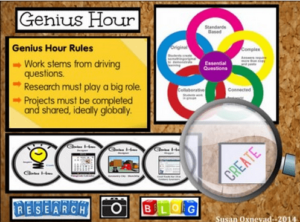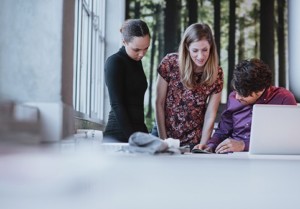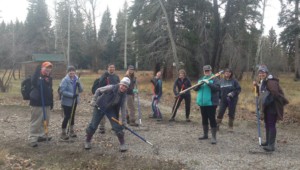Making Time to Reflect
Key Points
-
The practice of reflection is essential for us as educators and it is important that we help our students develop their own reflective practices.
-
When it comes to our reflective practice as educators, we need ongoing feedback.
-
Be open to the opportunities that come up, especially if that means that they will positively impact what we are providing for our students.

Now that the school year is well underway, with many schools having fall breaks or looking forward to the longer holiday breaks, it is a great time to think about the progress made so far this year. The year starts off and before you know it, the first couple of months of school have passed by quickly. Sometimes it can feel like we don’t have time to catch our breath or process what we have experienced. Fall is the perfect time to come up for air, to stop and breathe, pause and reflect on how the year has gone and set some new goals for the next couple of months.
Breaks provide a much needed time to rest and recharge while also creating time to think about how we have grown and more importantly, the growth we have seen in our students. We should think about what the learning experience has been like for our students. Fall is also the time to express gratitude for the people in our lives and the opportunities that we are thankful for. As educators, we have tremendous and unique opportunities every day to work with students and connect with our colleagues. It is important to reflect on and show gratitude for these opportunities.
Although the start of any school year can come with its challenges for getting back into a routine, there are so many wonderful things about teaching. The new year is a time for deciding to try different methods and tools that will benefit our students and transform learning. And the most important area that teachers need to focus on at the start and throughout the year is on building relationships. To do so, we have to be intentional about evaluating our teaching practice. How have we grown this year? What are some areas that we need to work on? How can we be better tomorrow?
Reflection is key
The practice of reflection is essential for us as educators and it is important that we help our students develop their own reflective practices. John Dewey stated, “We do not learn from experience… we learn from reflecting on experience.” Reflection needs to be a common practice in our classrooms. When we think about creating learning experiences for students, we want them to build their skills in the content area but we also need to focus on the social-emotional learning (SEL) skills, especially as we’ve had to deal with many changes and challenges over the past couple of years. We have all experienced challenges in our personal and professional lives, and now it is time to look back upon them and reflect. We also need to involve our students and look at how we are all learning and growing together.
This might be the first school year that felt “normal” to educators and students. Unlike prior years where we had limits placed on classroom spaces and student interactions, in this new year, different methods like using station rotations or having students work together more are possible. For my own reflective practice, I think about how the school year has gone so far and compare it with the past school year. I consider how my practices have changed and anything else that I noticed about my daily classroom procedures. Some of the questions I ask myself are:
What am I doing differently this year?
How did I start this school year with students?
Did I dive right into teaching the content or did I spend time getting to know students and providing opportunities for them to build relationships?
Am I teaching in the exact same way that I did last year? Using the same materials, and providing the same resources, or have I changed things and now I can see a difference and an impact on student learning?
Getting feedback to reflect upon
When it comes to our reflective practice as educators, we need ongoing feedback. Whether that comes from administrators who stop in our classroom for a formal observation or a quick drop-in, we can get some valuable information from them about the learning space that we have created with our students. They can observe our interactions, the students responses to what we are doing in the classroom, and our methods and give us a different perspective that can guide our reflections as we aim to build our skills. However, in most schools, these observations do not happen more than a few times throughout the year. That’s why I think it is important that we involve our students to help to give us feedback and to reflect with us as we are continuing to build our skills and make changes throughout the year. It is also important to guide our students in the practice of reflection.
As you reflect, you may feel as though you haven’t done enough, that you forgot about a certain activity that you had done in the past, or didn’t try a tool that had been on your list, but that’s okay. It’s good to always take time to refocus and consider the “why” behind the choices that we make. In my own experience, there have been days when I thought I had a great idea for a lesson and once I started, it didn’t work out as I thought it might. Some days I often have the opportunity to try it again after I’ve made some tweaks and reflected on it. This is what we must do every day. Even a few moments to think about the lesson we just taught, an activity that we did, or a conversation that we had with students, are all areas that we need to continue to reflect on.
The practice of reflection is essential for us as educators and it is important that we help our students develop their own reflective practices.
Rachelle Dené Poth
Here are four ways to focus on reflection
Surveys: Looking back over your first part of the year, perhaps you might create a survey to share with students. Using Google Forms or even tools like Nearpod or Quizizz, find out about which activities or materials students have enjoyed in class. Do they feel comfortable in their classroom space? Are they able to access any resources that they need for class whether they are present or if they are absent? What helps them to learn? If we set up a supportive learning space where students feel valued and know that we also rely on them for feedback, they will feel more comfortable providing us with information. We can also use anonymous surveys or try tools like LessonLoop, for student engagement surveys, to ask students for their feedback. The responses can be used to further guide our reflection and also take some of the students’ ideas to start conversations in the classroom. By doing this, students will see that we truly do value their input and it is helping us to continue to improve our practice so that we can best provide for them.
Personal notes: Another way to reflect is to set aside time each day and jot down a few notes about activities in class or our interactions with students. Grab a stack of notecards or a journal and jot down a few thoughts. Make it a digital reflection board and use Google Jamboard or Padlet to post ideas. At the end of the week or month, review the notes that you have and use them to guide your reflection. If we write these when the thoughts are fresh, even if we don’t have a lot of time to reflect each day, we can always review the notes, think through them and then act upon them. Take it to another level and start blogging about your experience and share your ideas with other educators and inspire them to reflect oo.
PLN: Another way to reflect is to be involved with a PLN or if your school has a PLC, as these provide the support that we need as educators. Choose a focus topic such as SEL or student engagement for example, which are two areas that educators often seek resources for. Having a support system in place helps us to become more self-aware, and also develop self-management skills because we do experience challenges in our work. If we model this support system for our students, they will learn the importance of having a network. When we have others to collaborate with, people who at times may be critical friends, it meets the purpose of helping each other to grow.
Videos and Observations: The use of video reflections can be quite helpful for educators. A few years ago, a student of mine captured her thoughts while doing PBL by recording short videos and then posting them on a Padlet. With these tools, she was able to reflect on her learning and thoughts throughout the entire PBL process. Using video tools such as a Swivl to capture our lesson and then use the video to guide our reflection is of great help. If we can observe colleagues and also be observed, it helps us to continue to grow, even though these observations and feedback can feel uncomfortable at first. Another tool that I tried recently was Edthena, a virtual coaching platform, that enabled me to record myself teaching a lesson. Using AI guided me to respond to some of the prompts about the methods I used and what my perception of their effectiveness was. With videos, we can go back and focus on specific parts of our lesson, and our delivery and then use this to guide our reflection. Having this available will lead more teachers to become self-aware, and have a support system, especially when there is not a person available to do the observations or to provide the coaching.
Plan next steps and set new goals
After taking some time to reflect on the beginning of the year, it’s time to think about new goals to set for the upcoming months. When reflecting on your year so far, are there areas that you notice you could have done something differently or there are topics that you wish you knew more about? Now is the time to find ways to expand where you are learning, seek virtual events or in-person conferences, or engage in some communities on social media. These are also so beneficial for building our skills professionally but also in making some personal connections.
It’s hard to find time during the school day, and the work continues into the evenings and the weekends, but we have to be intentional about taking a break when we need to. Be open to the opportunities that come up, especially if that means that they will positively impact what we are providing for our students. To bring our best selves into our classrooms each day, we must regularly evaluate our teaching practice and use this reflective process to grow professionally and personally.








0 Comments
Leave a Comment
Your email address will not be published. All fields are required.